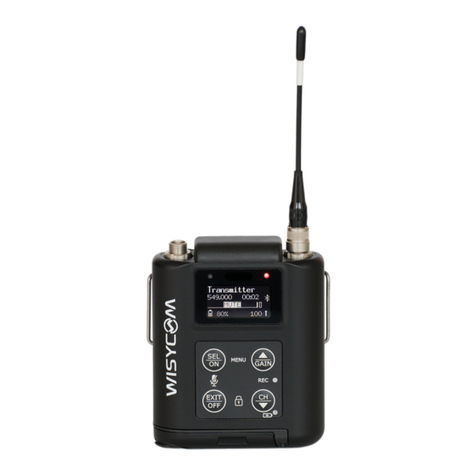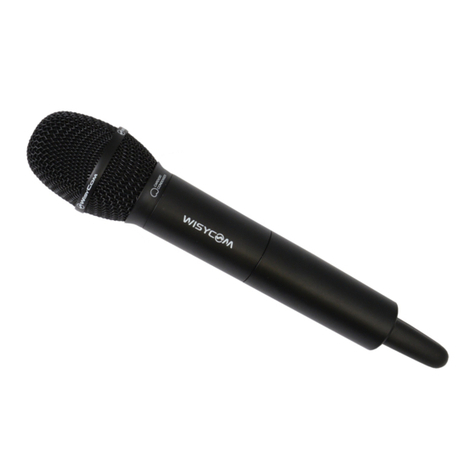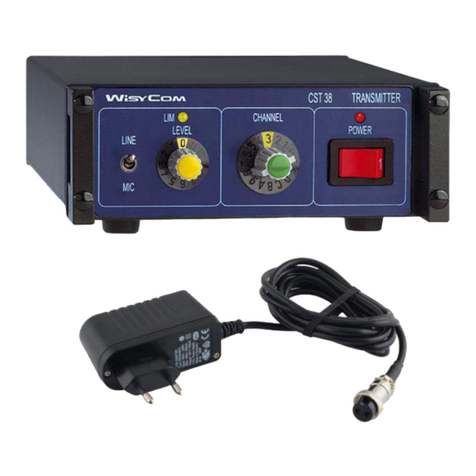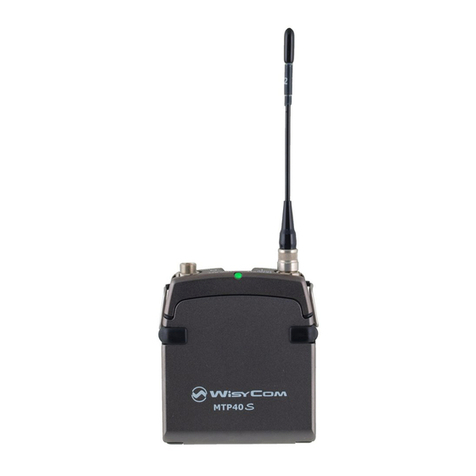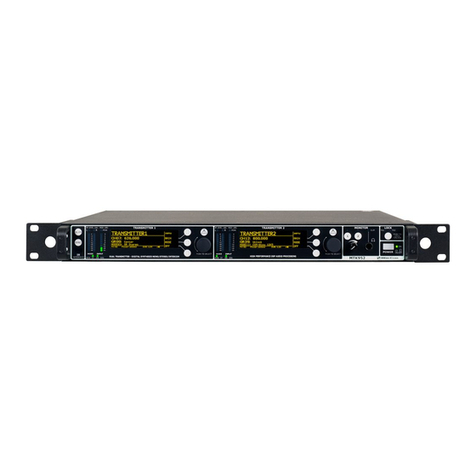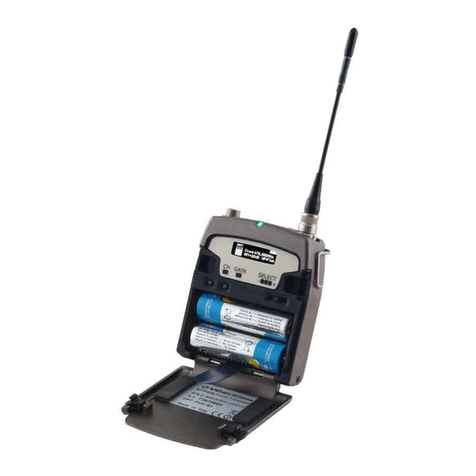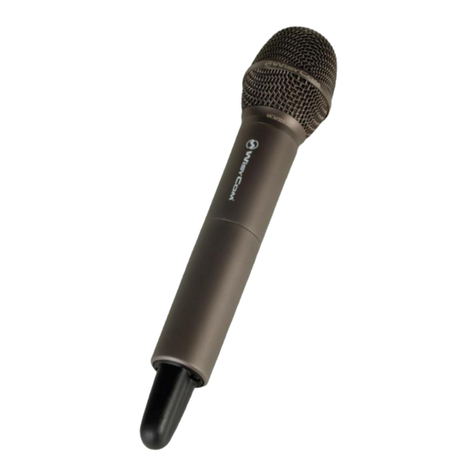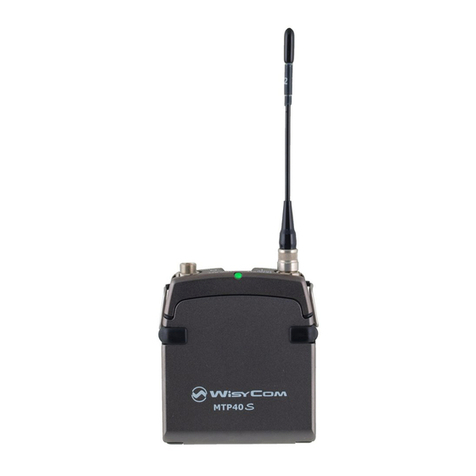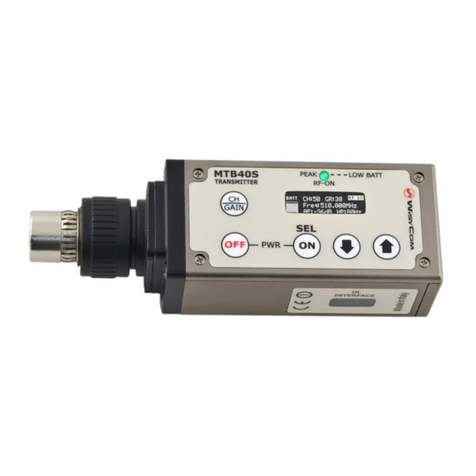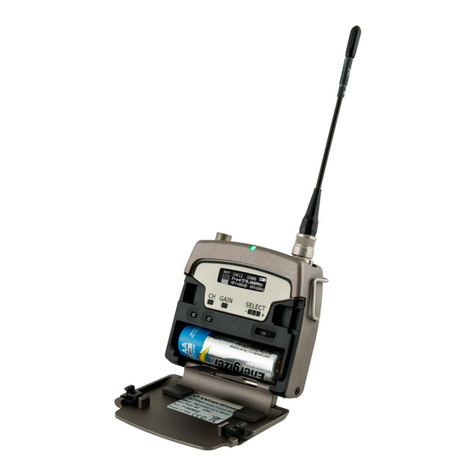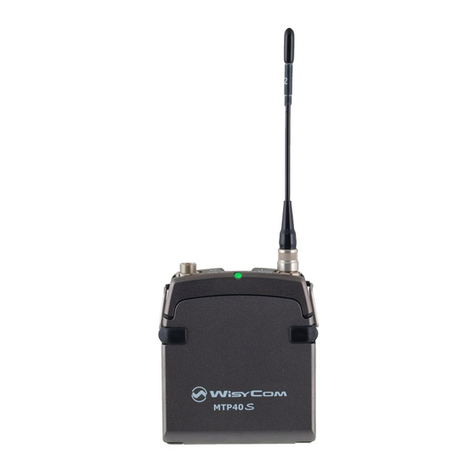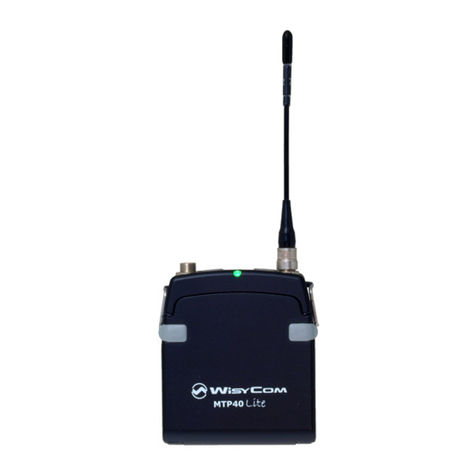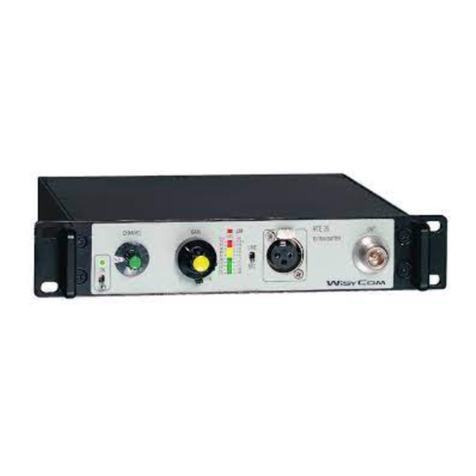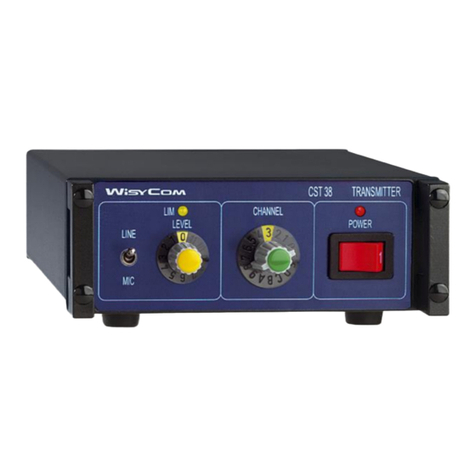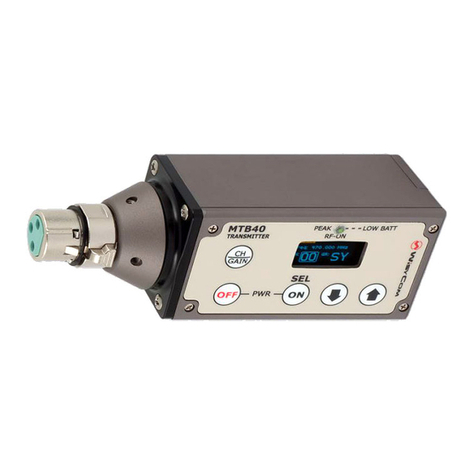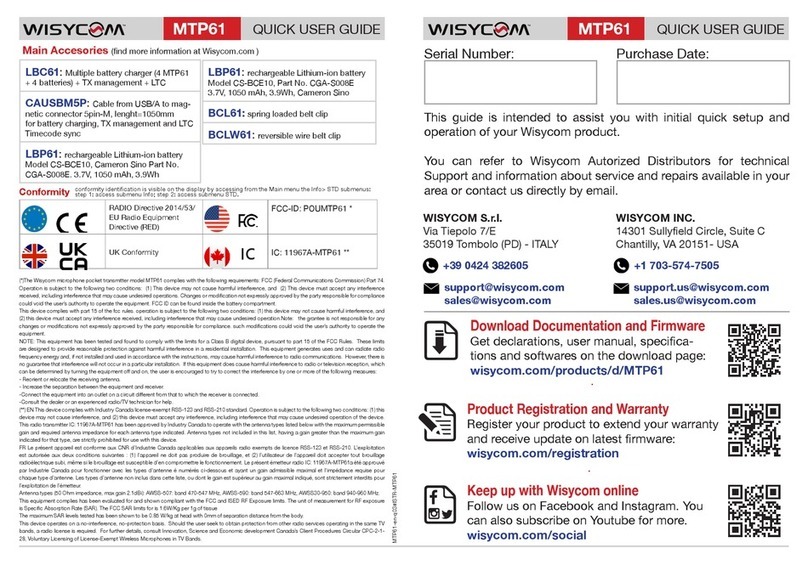
MTP61 mul-band miniature transmier
7
BT sync
Enable BT sync to do a syncronization via Bluetooth to Wisycom receiver.
This function is compatible with the following Wisycom receivers:
- MCR54 (fw v2.4.0)
- MCR54-DUAL (fw v2.4.0)
- MRK980 (new fw in progress).
During the synchronization process the receiver passes to the MTP61 the following parameters:
• tuning frequency, group and channel
• type of compander
• name of the receiver
MTP61 sets these parameters accordly and passes to the receiver the modulation type (WB/
NB). If some parameter is not compatible between MTP61 and receiver, a warning appears on
receiver display.
PRESET menu
MTP61 can recall configuration presets:
• “Factory” recalls the Wisycom factory configuration.
• “USER” (U1, U2…,, U8) recalls the configuration saved by menu
RF menu
Freq to change of Group/Channel/Frequency
Check the maximum power level that can be
selected based on the power profile configured
in your transmitter*
The MTP61 has 40 groups of 60 channels each. Normally this is too much for wireless micro-
phones applications.
Connecting with computer with WISYCOM MANAGER software, it is possible to hide single chan-
nels or even complete groups of channels: once hidden those items are not shown anymore on
the channels or groups selection. To show channels or groups hidden use again the WISYCOM
MANAGER software.
Using this software it is also possible to lock channels or groups. When a channel is locked, it is
not possible to change the frequency from the display menu of the transmitter. Locking a group
means that all channels are locked. When a channel or a group are locked, at the left of the fre-
quency will appear a lock icon to indicate that the frequency is not editable.
RF Power to set power level (10, L10, 20, L20, 50, 100 mW, OFF to disable transmission).
LED2 becomes fixed red when the transmitter is tuned and RF Power is set to OFF, becomes
fixed green when the transmitter is tuned and RF power isn’t OFF. Increasing the power level
increases the coverage but also increases the power consumption and in small environments it
can cause intermodulation problems. Use L10 or L20 levels to set 10 mW or 20 mW of power
*The transmitter is factory programmed with a power profile capable of complying with the regulations in force in the country of sale of the MTP61.
this profile limits the selectable frequencies and the maximum power level allowed.
